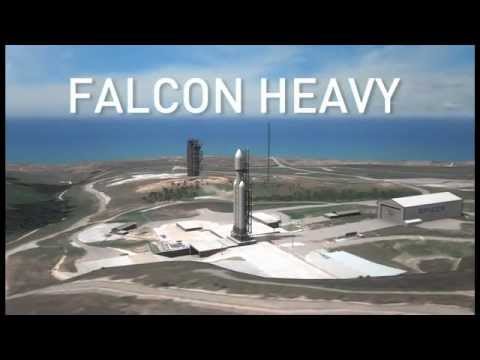The Falcon Heavy is slated to launch twice the payload of the Shuttle at about one-fifteenth the cost of a Shuttle launch. It is thirty times cheaper to launch the same weight and ten times cheaper than a Delta IV Heavy.
SpaceX has broken the long-sought 1,000 dollars a pound to orbit price barrier with a rocket which is still expendable.
SpaceX had a launch manifest of over 40 payloads, far exceeding any current government contracts, with more being added every month. These are divided between the Falcon 9 and the Falcon Heavy.
Using the average posted price value of $100 million, the Falcon Heavy actually can be launched for about one-fourth the cost of a Delta IV Heavy (4.35 times cheaper per launch), yet it carries 2.31 times as much payload! This means the current cost per pound to LEO for the Delta IV Heavy is 4.35 times 2.31 = 10.05 or almost exactly 10 times more expensive (by multiplying the two ratios together).
Musk has been talking about creating a hydrogen-oxygen upper stage, which could boost the total Falcon Heavy payload (from 53 tons) close to the minimum for a “true” heavy lift vehicle, or about 70 tons. This engine could enter service before 2015.
The Falcon Heavy is similar in conformation to the Delta 4 Heavy, which is the only rocket currently in service that is fair to compare to the Falcon Heavy. The “Heavy” will consist of three Falcon 9 stages strapped together (two side stages and a core stage which has a small upper stage and payload with fairing). The Falcon stages are stretched and the nine Merlin engines on each will be upgraded to have more thrust than the current engines. With a total liftoff mass of 1400 metric tons, it will put 53 metric tons into a standard 200 km Earth orbit at 28 degrees. (The 200 km orbit is a standard orbit to start from, for example, for injection into a geosynchronous transfer orbit — payloads are not left in this 200 km orbit.) Each of the “Heavy’s” three stages are about 12 feet in diameter, so based on data from the Ares I, the payload fairing could be up to 18 feet in diameter. The currently proposed shroud diameter is 17 feet. The total thrust at liftoff will be 3.8 million pounds or about 1700 tons, or 50% of the Saturn V’s thrust. This will make it the world’s largest and most powerful operational rocket once it has flown.
Reusable Stages
Musk’s National Press Club announcement of September 29th, 2011, shows that the recovery plan includes having the first stage actually reverse course and land vertically back near the launch pad. This means the rocket has to cancel all eastward velocity and gain westward velocity, as well as decelerating the vertical component during landing. This would require a significant amount of delta-V that would reduce the payload capacity of the Falcon 9, but with the Falcon Heavy, which has extra payload capacity and where at least two first stages would be recovered, the payload size reduction may not be that big an issue. If a launch site could be found with an island in the right location downrange, payload capacity could be gained while still recovering the stages. The actual landing would take place with extendable landing legs on a level surface (without a flame bucket) and would use only a single engine.
SpaceX, however, has expressed confidence it could build a Falcon “Super Heavy” launcher with a 150 metric ton payload capability and a cost per flight of $300 million. This results in a launch cost of $1,000 per pound, which is close to the per-pound cost of the Falcon Heavy but with a payload three times larger — a payload even larger than the largest payload projected for NASA’s SLS.
If you liked this article, please give it a quick review on ycombinator or StumbleUpon. Thanks

Brian Wang is a Futurist Thought Leader and a popular Science blogger with 1 million readers per month. His blog Nextbigfuture.com is ranked #1 Science News Blog. It covers many disruptive technology and trends including Space, Robotics, Artificial Intelligence, Medicine, Anti-aging Biotechnology, and Nanotechnology.
Known for identifying cutting edge technologies, he is currently a Co-Founder of a startup and fundraiser for high potential early-stage companies. He is the Head of Research for Allocations for deep technology investments and an Angel Investor at Space Angels.
A frequent speaker at corporations, he has been a TEDx speaker, a Singularity University speaker and guest at numerous interviews for radio and podcasts. He is open to public speaking and advising engagements.

